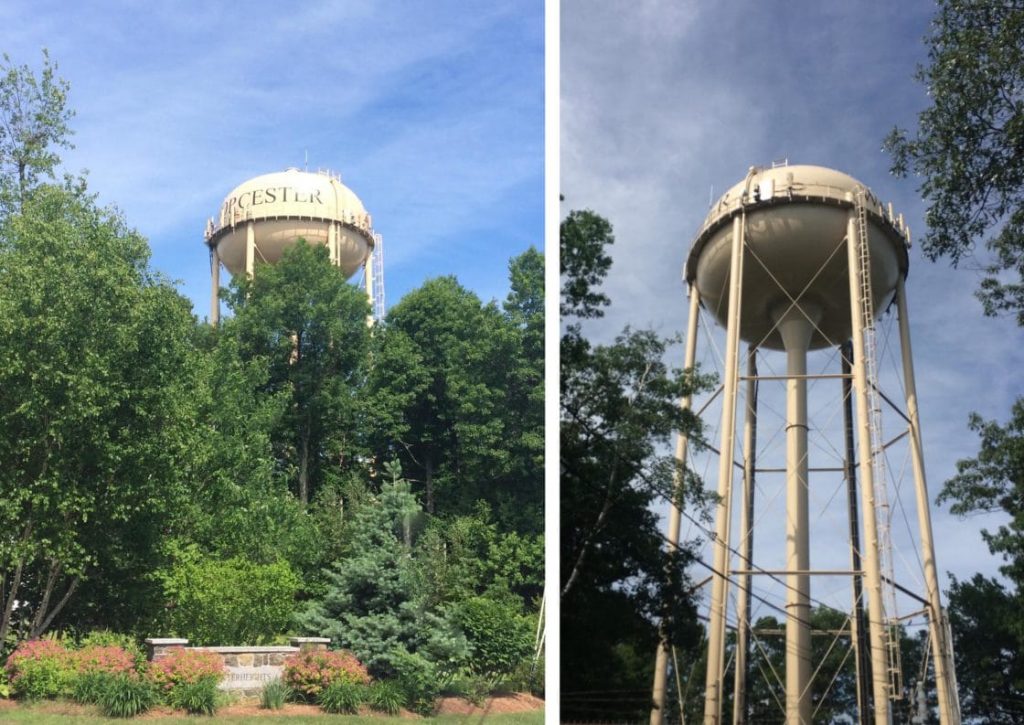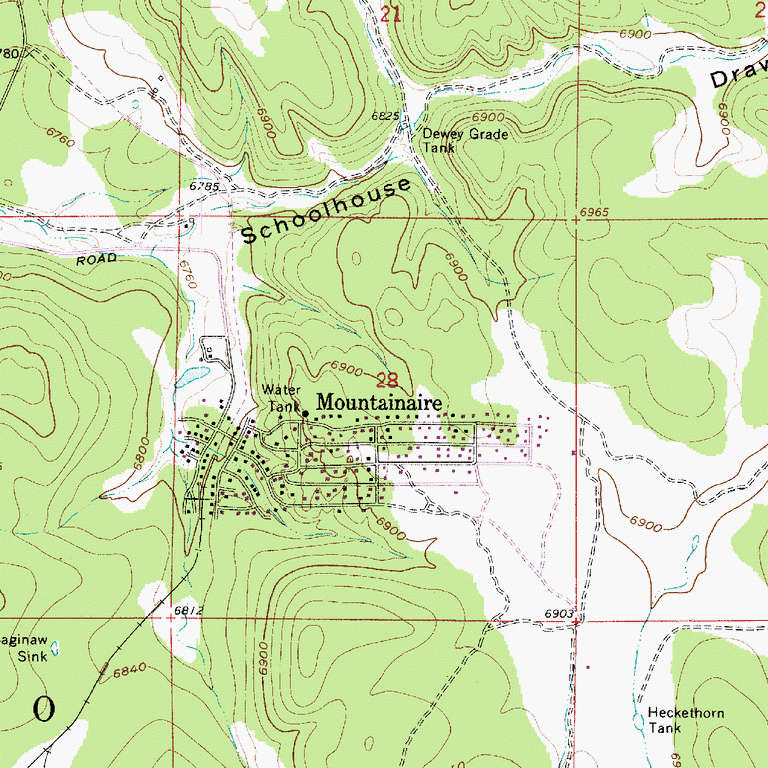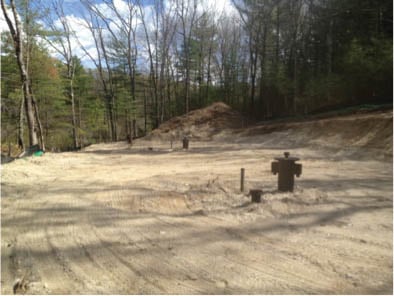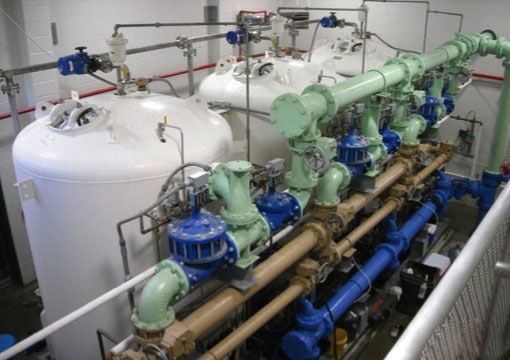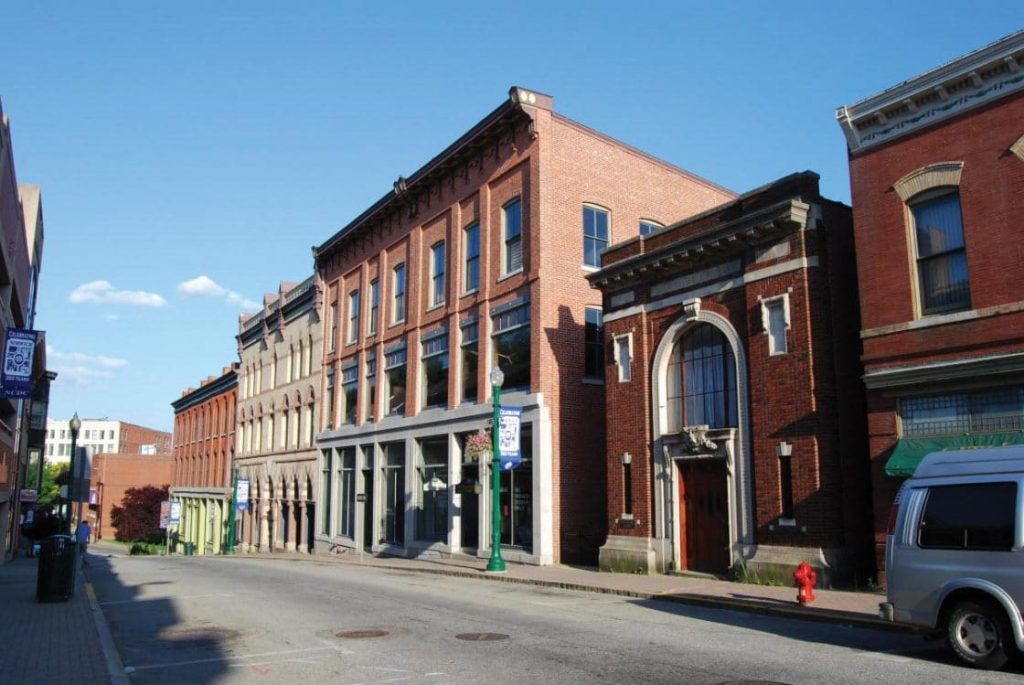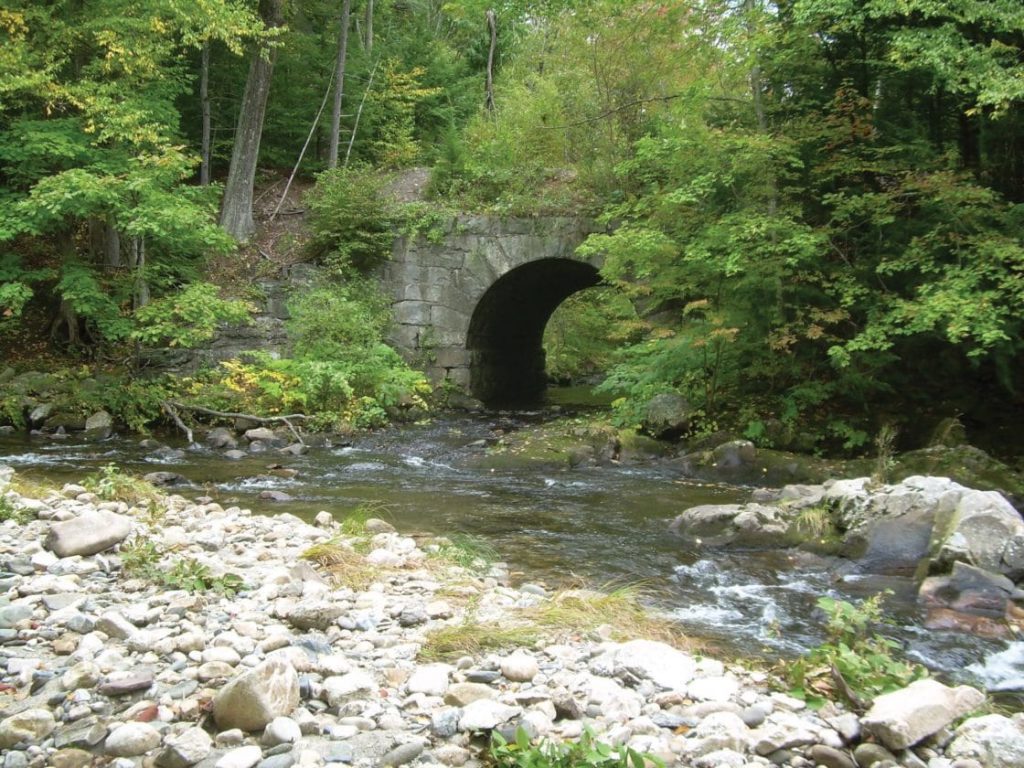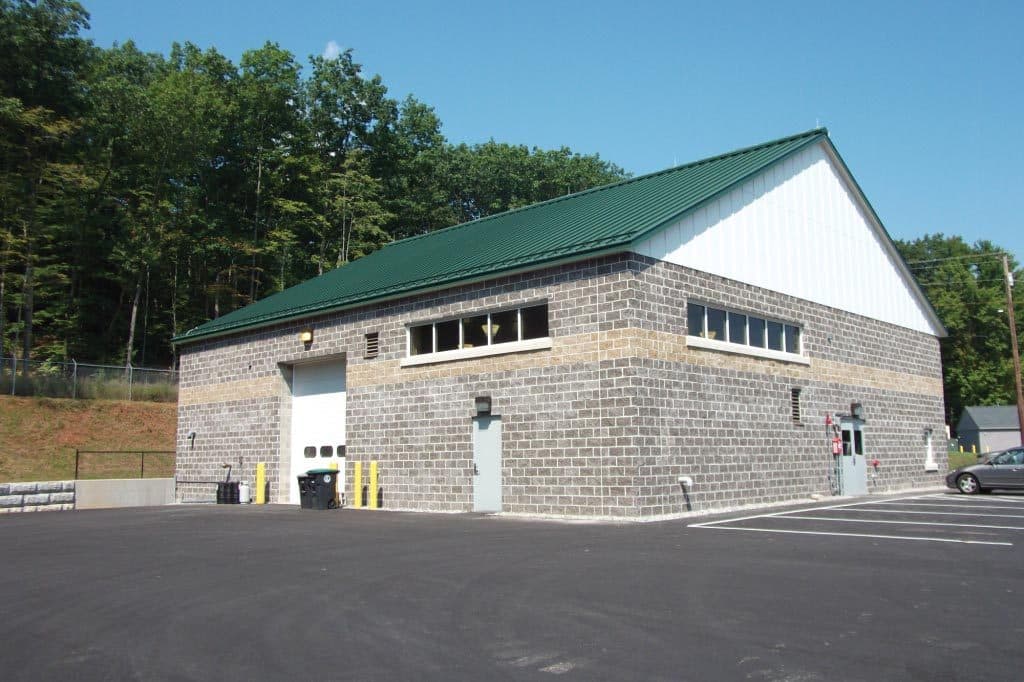CLIENT: Northampton, Massachusetts
PROJECT: Mountain Street Water Treatment Plant Valve Replacement
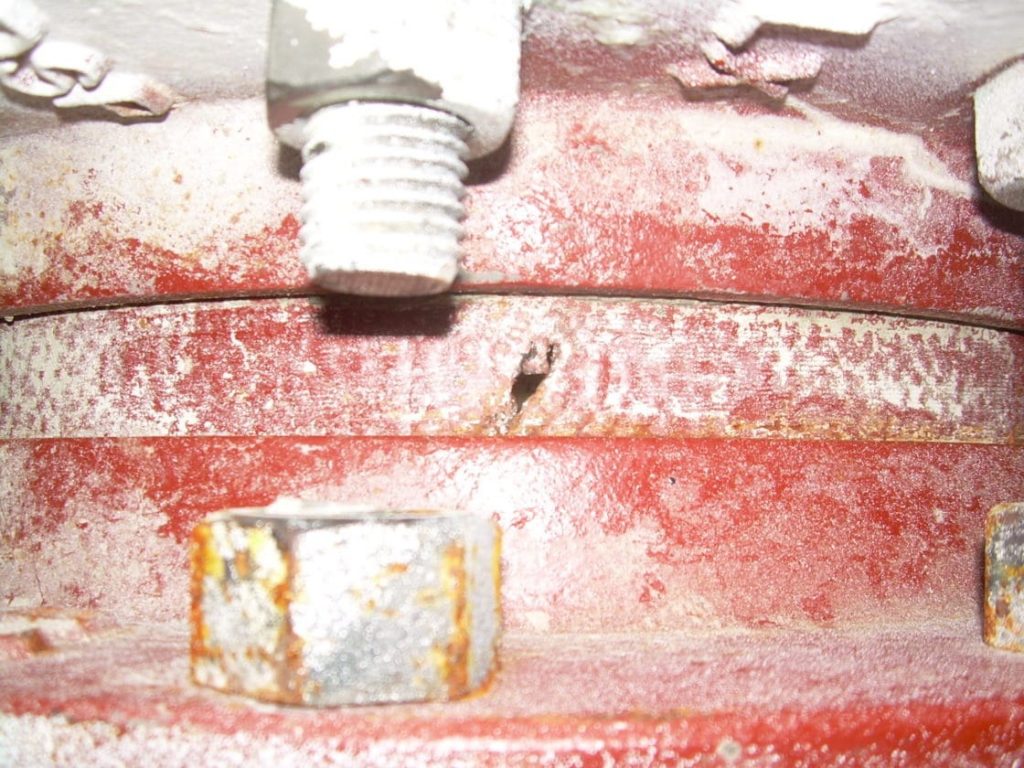
THE CHALLENGE: The three check valves on the clarifier influent feed lines were failing and, as a result, the disc was consistently hitting the downstream pipe spool piece, eventually causing each section to develop holes and leaks.
THE SOLUTION: Rather than simply replacing the check valves with the same style valve, we decided to dig deeper. We believed the discs were failing due to turbulence generated by an upstream modulating valve, so we researched alternative valves. We found that most alternative valves required a longer lay length than the existing check valves, which would have required replacement of the influent piping as well as reconfiguration of the valves and flow meters on each of the clarifier influents that feed the three units back to the header.
With additional research, we identified a flanged duckbill check valve that could actually be inserted between two flanges within the pipe, with the flange of the check valve sandwiched between the two flanges of the existing pipe configuration. The valve itself was located within the influent piping and allowed for installation without having to significantly alter the clarifier influent piping. As a result, the Owner saved on the cost of the valve replacement as well as avoided an extended shutdown time, as each clarifier would have been out of service for a far longer duration if extensive influent piping modifications were necessary.
PROGRESS: The project was successfully completed in October of 2014.

